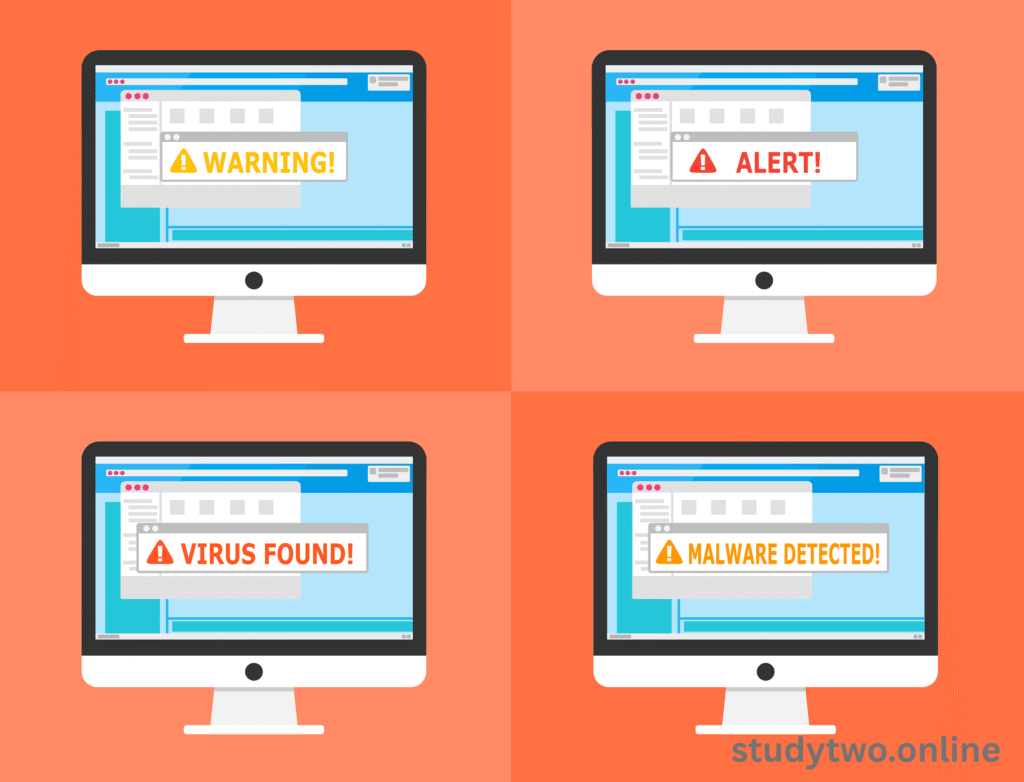Introduction to the Technology Alert List
As the fast-changing digital world of 2025 is unfolding, being aware of possible cyber threats is becoming increasingly important for people, organizations, and companies. A Technology Alert List is a crucial tool, spotting new cybersecurity threats, vulnerabilities, and trends that threaten digital assets. This complete guide delves into the definition of a technology alert list, why it matters, the most significant threats to be aware of in 2025, and practical steps to counter them. Being proactive, you can shield your information, infrastructures, and reputation in a rapidly interconnected world.

What Is a Technology Alert List?
A Technology Alert List is a handpicked collection of ongoing and evolving cybersecurity threats, vulnerabilities, and technological hazards. These lists are prepared by experts in cybersecurity, government agencies, or IT groups and offer timely notices of imminent risks, including malware, phishing attacks, software vulnerabilities, and advanced persistent threats (APTs). The intention is to inform users with the knowledge and measures necessary to prevent risks from becoming major attacks.
Primary elements of a technology alert list are:
-
Threat Descriptions: In-depth details of individual vulnerabilities or attack vectors.
-
Risk Levels: Evaluations of the severity and potential impact of each threat.
-
Mitigation Strategies: Suggested patches, updates, or defensive actions.
-
Targeted Audiences: Indications of whether the threat is against individuals, businesses, or particular industries.
-
Source Attribution: Details about where the threat is coming from, if identified.
Why Is a Technology Alert List Important in 2025?
With increasingly advanced cyber threats, a technology alert list is an absolute must-have to outpace the attackers. Here’s why:
1. Preventive Threat Awareness
Through tracking a technology alert list, organizations and individuals can spot threats early and take precautionary measures, minimizing chances of successful attack.
2. Defense Against Mutating Threats
Cybercriminals are using artificial intelligence (AI), quantum computing, and other sophisticated technologies to execute sophisticated attacks. A technology alert list notifies you of these changing methods.
3. Protection of Sensitive Information
Data breaches can cause financial losses, compliance fines, and reputational loss. Alert lists point out vulnerabilities that may reveal sensitive information, allowing for timely mitigation.
4. Compliance with Regulations
Most sectors are governed by rigorous cybersecurity standards like GDPR, HIPAA, or PCI-DSS. A technology alert list ensures that organizations remain compliant by addressing identified vulnerabilities.
5. Enabling IT Teams
For IT and cybersecurity teams, alert lists offer actionable intelligence to right-size resources, patch systems, and harden defenses.
Top Threats on the 2025 Technology Alert List
According to present trends and analyst opinions, the following are the top cybersecurity threats to monitor in 2025:
1. AI-Based Phishing Attacks
Phishing attacks powered by artificial intelligence are becoming increasingly sophisticated, employing deepfake audio, targeted emails, and social engineering methods. The attacks are aimed at both individuals and businesses, frequently evading basic email filters.
Mitigation: Deploy advanced email security tools, activate two-factor authentication (2FA), and educate employees to identify phishing attempts.
2. Ransomware-as-a-Service (RaaS)
Ransomware remains at the top of the threat landscape, and RaaS platforms simplify attacks for non-tech-savvy criminals. Double-extortion techniques will be in high demand in 2025, with attackers exfiltrating files before encrypting them.
Mitigation: Back up data on a regular basis, use endpoint detection and response (EDR) solutions, and train users to browse safely.
3. Supply Chain Attacks
Cyber attackers are targeting more and more software supply chains to victimize numerous organizations at once with one attack. High-profile attacks within the last few years demonstrate the catastrophic results of such attacks.
Mitigation: Validate third-party vendors, implement strict access controls, and scan software updates for hostile code.
4. Quantum Computing Threats
As quantum computing evolves, it threatens to undermine conventional encryption techniques. By 2025, nascent quantum attacks may be launched on sensitive information, like financial or government files.
Mitigation: Migrate to post-quantum cryptography and remain aware of NIST-recommended quantum-resistant algorithms.
5. IoT Vulnerabilities
The increased number of Internet of Things (IoT) devices, ranging from smart home appliances to industrial sensors, opens up new avenues for attackers. Most IoT devices do not have strong security measures, and hence they become an easy prey.
Mitigation: Replace default passwords, isolate IoT devices on isolated networks, and implement firmware updates on a regular basis.
How to Effectively Use a Technology Alert List
In order to make the most out of a technology alert list, utilize the following best practices:
1. Subscribe to Trusted Sources
Draw from credible sources for your technology alert list, including:
-
CISA (Cybersecurity and Infrastructure Security Agency): Offers critical threat and vulnerability alerts.
-
NIST (National Institute of Standards and Technology): Provides recommendations on new risks and how to mitigate them.
-
Vendor Security Bulletins: Product-specific threat alerts from vendors like Microsoft, Cisco, or Adobe.
-
Threat Intelligence Platforms: Products like Recorded Future or FireEye which summarize current threat data in real time.
2. Prioritize Threats
All threats are not equally applicable to your company. Prioritize alerts using risk assessments according to their likely impact and your unique vulnerabilities.
3. Automate Monitoring
Utilize security information and event management (SIEM) products or threat intelligence platforms to automate the monitoring of alert lists and incorporate them into your security processes.
4. Act Quickly
Prompt response is necessary. Patch vulnerabilities, install updates, and install countermeasures immediately alerts are put out to reduce exposure.
5. Educate Stakeholders
Communicate applicable alerts to employees, IT staff, and management to encourage a cybersecurity-conscious culture. Maintaining regular training ensures all are aware of their part in prevention against threats.
Challenges in Managing a Technology Alert List
Technology alert lists are priceless, but they also present challenges:
-
Alert Fatigue: The sheer number of alerts can become overwhelming to IT teams, causing them to miss important warnings.
-
False Positives: Certain alerts have a tendency to overstate risks, creating unnecessary alarm or resource expenditure.
-
Resource Constraints: Smaller organizations lack the funds or personnel to counter all threats in a timely manner.
-
Rapidly Changing Threats: The dynamic nature of cyber threats necessitates ongoing vigilance and accommodation.
To get past these issues, spend money on automation tools, bring on talented cybersecurity personnel, and implement a risk-based strategy to concentrate on the most important threats.
Creating Your Own Technology Alert List
For those with special requirements, developing a tailored technology alert list can be useful. Here’s how to proceed:
-
Identify Assets: List your important systems, applications, and data to know what requires protection.
-
Monitor Threat Feeds: Collect information from several sources, such as open-source intelligence (OSINT), dark web communities, and industry threat reports.
-
Assess Relevance: Prioritize alerts according to your industry, tech stack, and risk profile.
-
Document and Share: Create a centralized library of alerts and share them with respective teams.
-
Review Regularly: Update your list regularly to incorporate new threats and fixed vulnerabilities.
The Future of Technology Alert Lists
As cyber threats become more sophisticated, technology alert lists will follow suit. In the coming months, look for:
-
AI-Driven Threat Intelligence: Machine learning will refine accuracy and speed of threat detection, eliminating false positives.
-
Real-Time Global Collaboration: Global cybersecurity partnerships will exchange alerts in real time, enhancing worldwide response times.
-
Integration with Zero Trust Architectures: Alert lists will be integratable into zero trust systems, allowing dynamic access controls tied to threat levels.
-
Emphasis on Upcoming Technologies: Alerts will more and more focus on AI-related risks, prioritizing them together with quantum computing and 6G networks.
Conclusion
The technology alert list is a useful aid for managing the complicated cybersecurity ecosystem of 2025. You can shield your digital belongings from bad actors by staying aware of upcoming dangers, ranking risks in order of significance, and proactively responding to threats. Whether you’re a person protecting personal information or an enterprise defending essential infrastructure, a technology alert list gives you the power to stay ahead of cybercrime. Subscribe to reputable sources, spend in strong security solutions, and cultivate a culture of awareness to succeed in the digital world.
